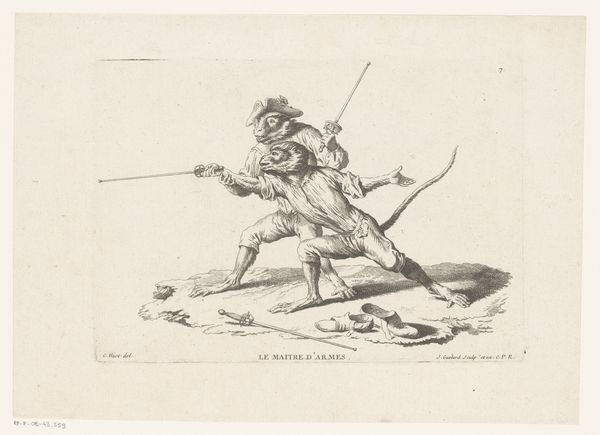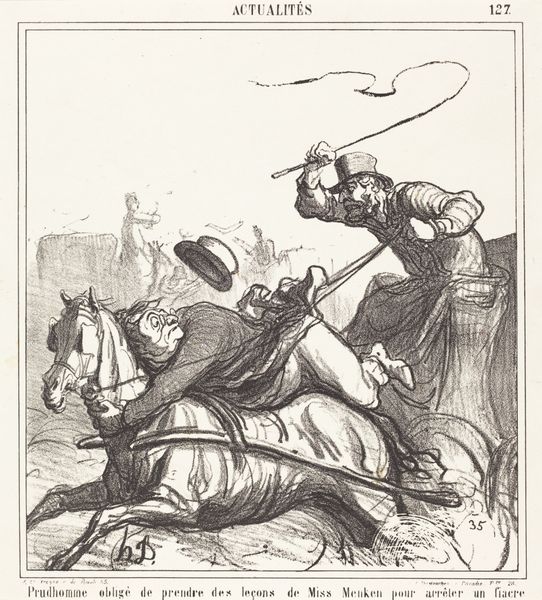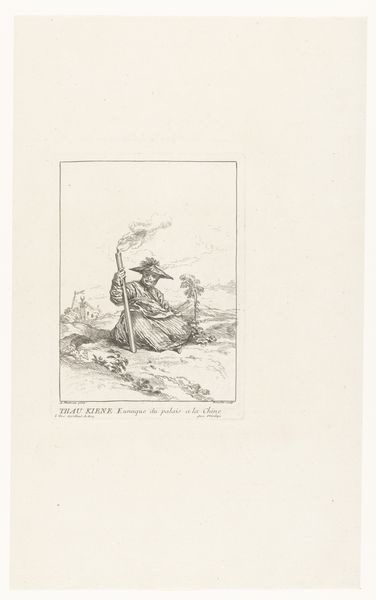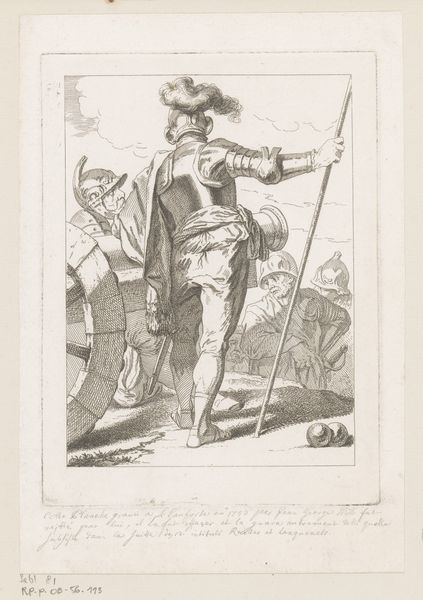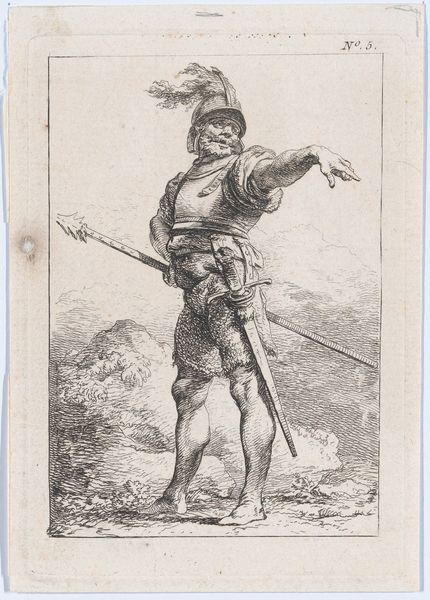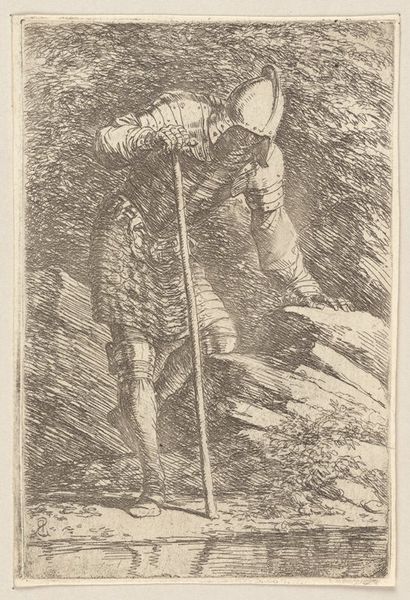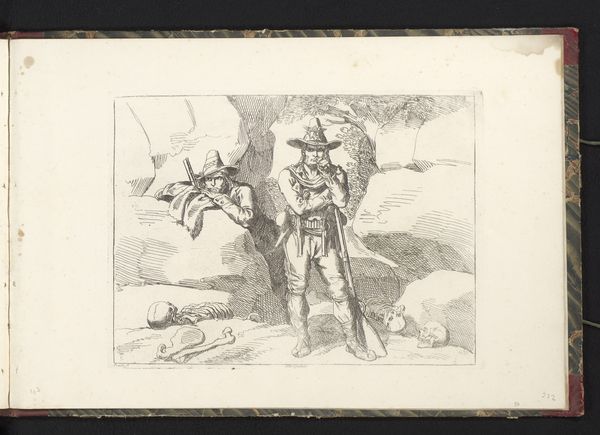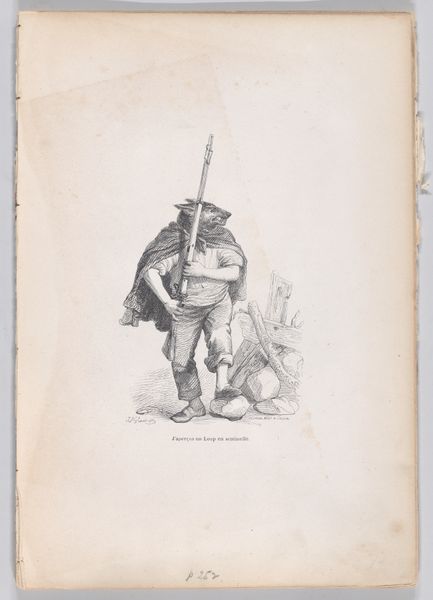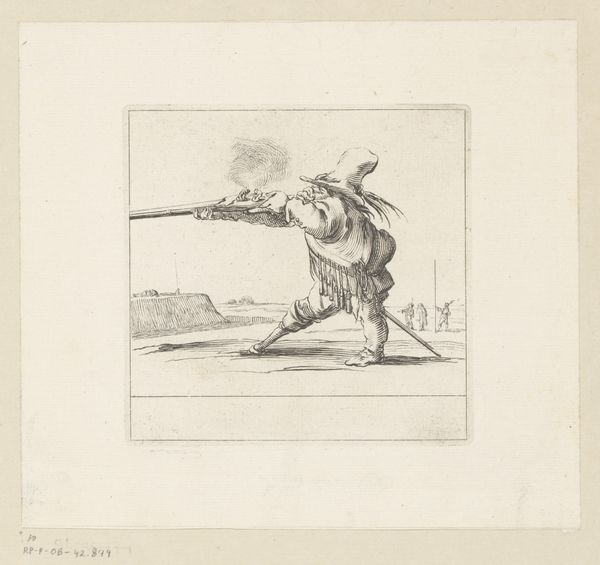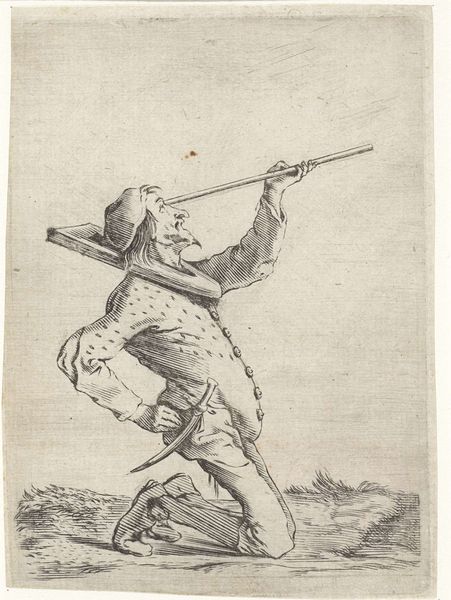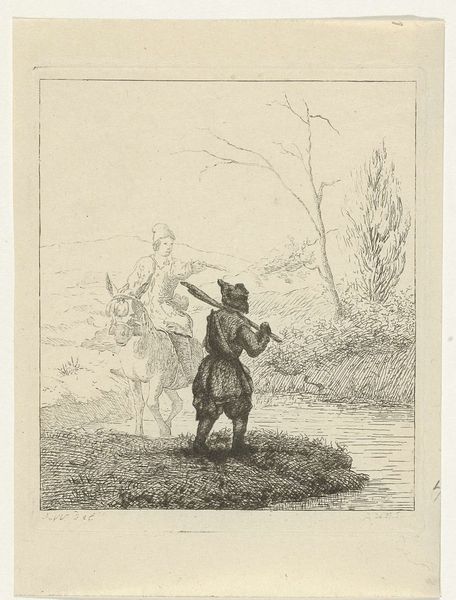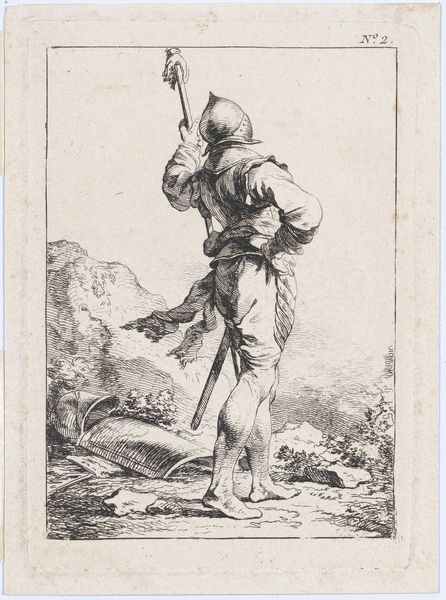
drawing, pencil
#
drawing
#
comic strip sketch
#
light pencil work
#
pencil sketch
#
personal sketchbook
#
sketchwork
#
ink drawing experimentation
#
pen-ink sketch
#
pencil
#
sketchbook drawing
#
history-painting
#
storyboard and sketchbook work
#
sketchbook art
#
realism
Dimensions: height 238 mm, width 186 mm
Copyright: Rijks Museum: Open Domain
Editor: This pencil drawing, titled "Scherpschutter in actie," or "Sharpshooter in Action," was created in 1855 by Hippolyte Bellangé. It’s currently held at the Rijksmuseum. It seems like a straightforward depiction of soldiers, but I'm wondering about its purpose, given that it’s “just” a drawing. How do you see this work in the context of its time? Curator: It's tempting to see this drawing solely for its representational value, but let’s consider the material circumstances. The "Scherpschutter" offers a window into the industrialization of warfare. Bellange's choice of pencil, a readily available and relatively inexpensive material, suggests a mass-producible image, one that could circulate widely. Were these images perhaps made to popularize and celebrate, and even perhaps, normalize warfare? Editor: So, instead of focusing on the artistic skill, we look at what pencil, as a material, says about the society that created this image? Do you think Bellangé saw the implications of mass producing images of warfare? Curator: Precisely. And let’s look closely at the rifle. Consider the immense resources – material, labor, financial – poured into their production during the mid-19th century. Bellangé, knowingly or not, captured a pivotal moment: the melding of art and industry in service of military power. This image subtly advertises the fruits of industrial progress and implicitly, a worldview reliant on armed conflict. What social strata could access to this artwork at that time? Editor: Interesting! It pushes us to think beyond the aesthetic and into the economic underpinnings of even seemingly simple artworks. The labor needed for both image and war. I will definitely look at other artworks from this new angle! Curator: Indeed. Examining the material realities of artistic creation opens new avenues for understanding not just the artwork, but the world in which it was produced.
Comments
No comments
Be the first to comment and join the conversation on the ultimate creative platform.

